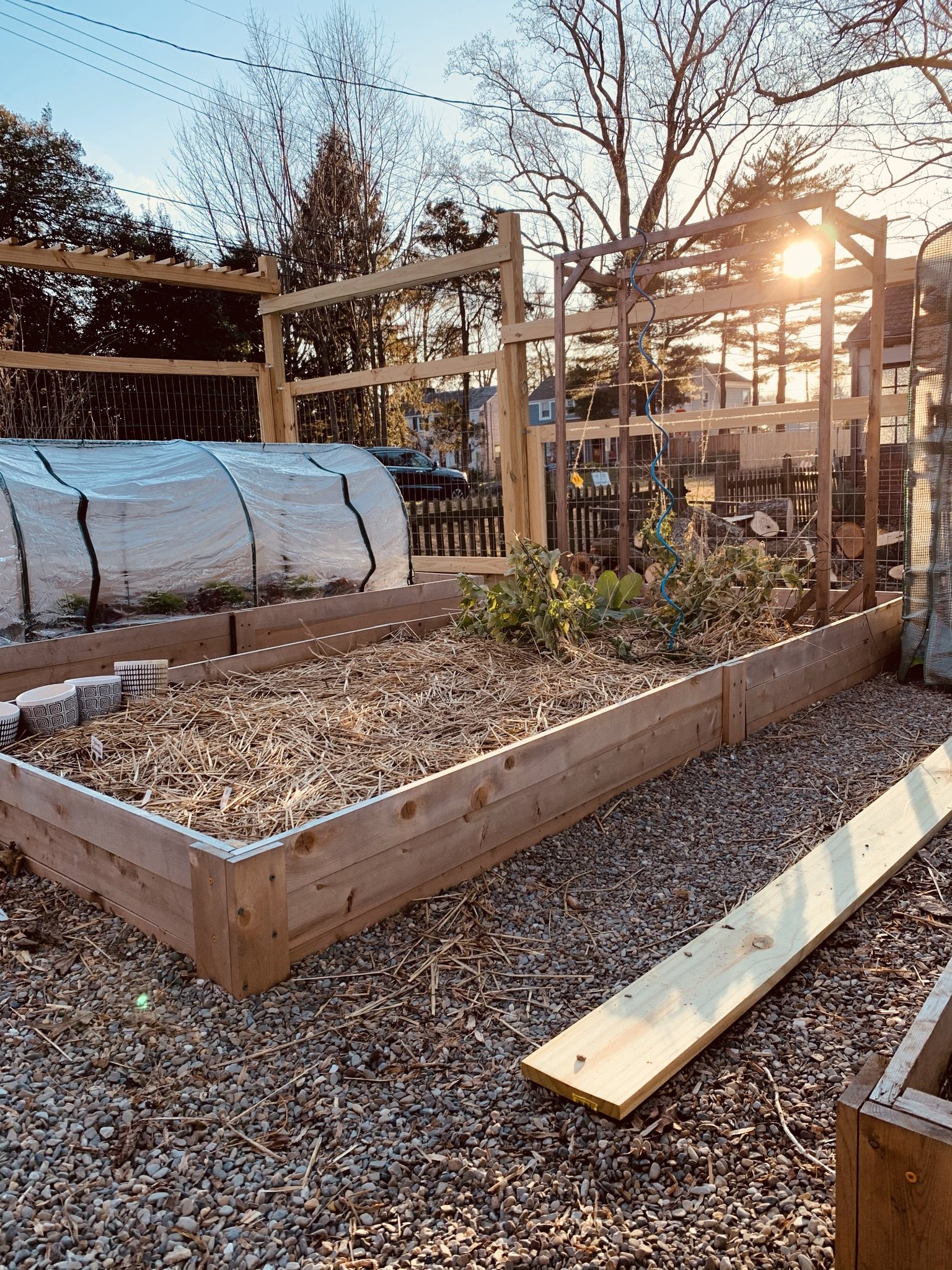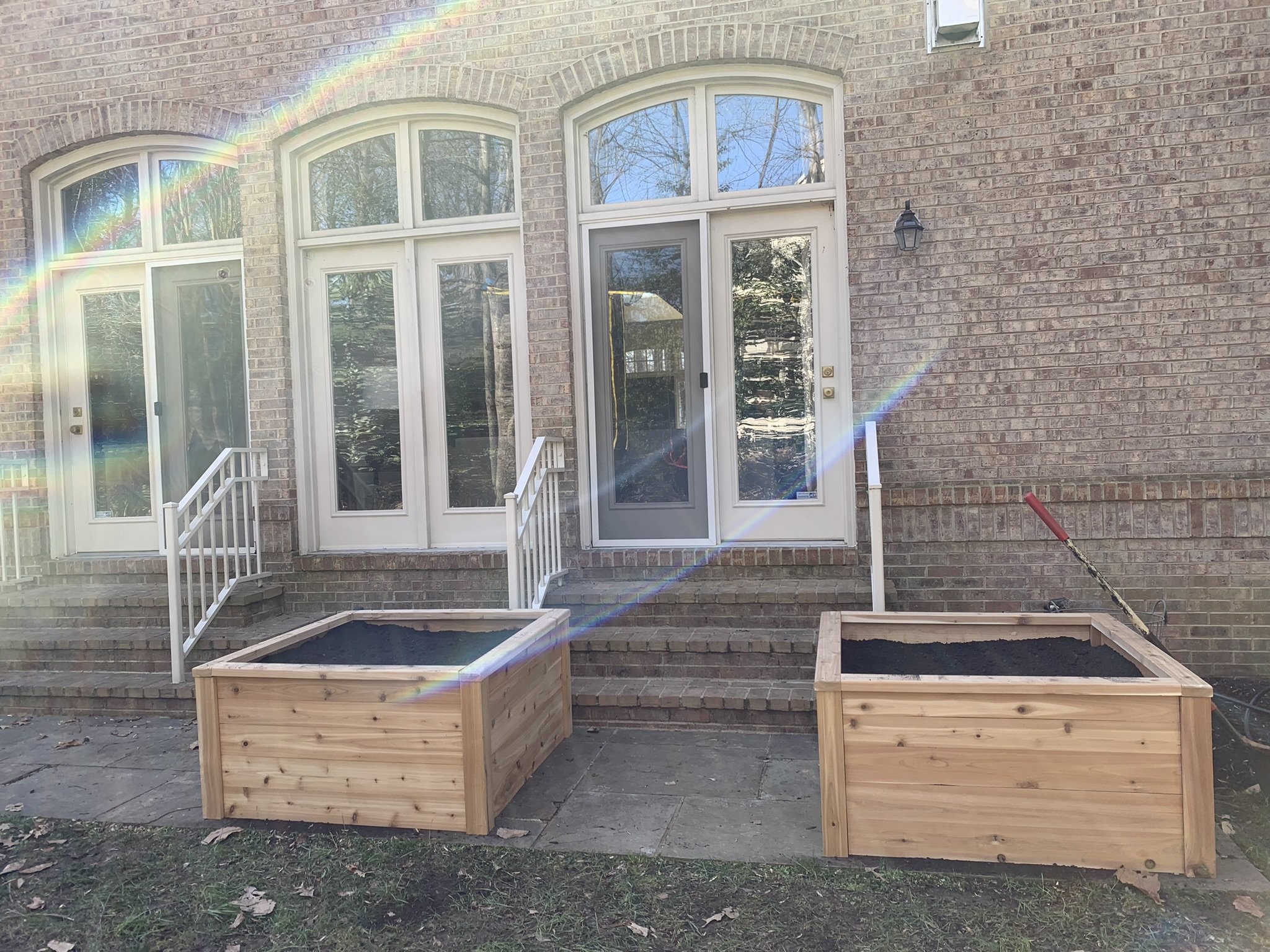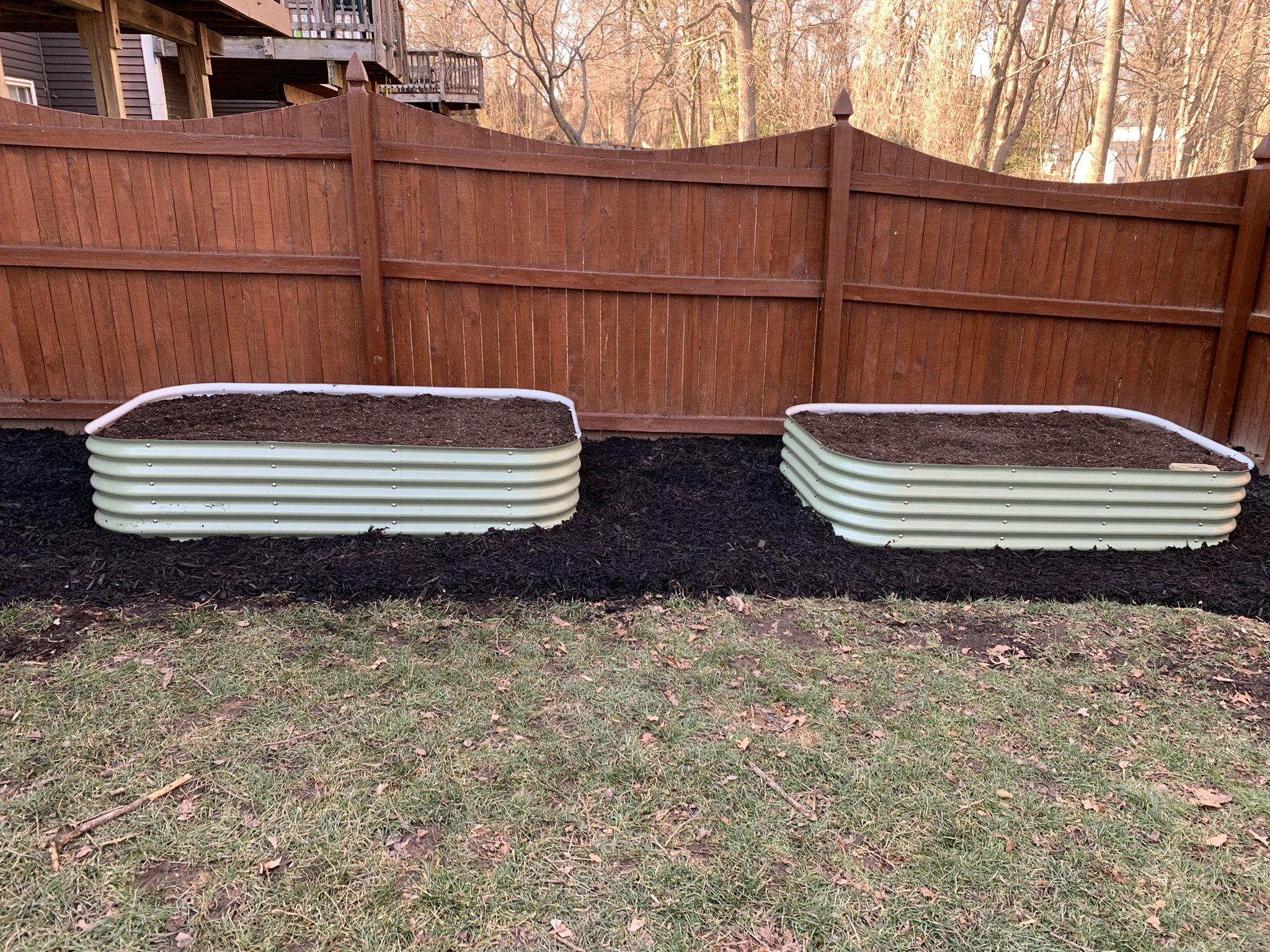Best Raised Bed Materials and Why I Chose Mine
Let’s face it - no matter how much we all want, there isn’t a gardener in the world who starts out with the perfect in ground growing soil. I believe we’ve all had a hand at ground gardening, but the outcome wasn’t really like the one we initially thought. It takes a long time to cultivate nutrient rich soil through compost additions, soil amendments, and adding additional organic materials. While this may work for some, it just didn’t work for me. I didn’t have the time to dedicate to building up soil just to grow my peppers. Once I learned about raised bed gardening, there was no turning back.
Raised garden beds greatly contribute to a healthy and productive garden space, especially when it comes to growing various fruits, veggies, and herbs. It’s aesthetically appealing and the way I like to build gardens, they truly become an extension of your home. A space you want to spend time in, not just work in. And you have complete and utter control of the soil. And if you know me, I like the control.
However, some gardeners aren’t really sold on the idea of raised beds for the cost of making them and that the soil is “right there”. Many believe it’s just throwing money down the drain. You can probably tell I’m not part of this group, as I see raised garden beds to be really versatile. So, to determine whether you need it, think of its purpose. Even if you’re going for aesthetics, that’s perfectly fine! Once you’ve made up your mind, think of how much space you have, the size you want, and, of course, raised bed materials. This is exactly what I’ll be sharing with you, all aspects of raised bed materials, including durability, cost-effectiveness, sustainability, and aesthetic appeal. By doing so, you’ll be one step closer to having the garden you’ve always dreamed of.
Materials For Raised Beds
When choosing raised bed materials, you should consider accessibility, convenience and aesthetics as well as price. This garden type will really pay off in the long run, but you shouldn’t go over your budget.
For that reason, I’ll go in-depth into some of the most popular materials for raised beds - wood, metal and composites, and concrete.
Wood Raised Garden Beds
Even though the lumber price has sky-rocketed in the last few years, gardeners won’t stop building wooden raised beds. And the reason for this is simple - wood is arguably the most convenient option. It is durable and its versatility is unmatched.
Still, there is one very thing you need to be careful of if you’re opting for lumber - the type of wood. All wood is not created equal.
As the most accessible material, you’d assume you can choose any type of wood for your raised beds. Pine is a softer material than Cedar and will often warp when exposed to damp soil over a period of time. Many times this is what you’re getting when you buy the kits online. And they are typically narrow boards, only 1” thick. Not good enough to even sit on.
Cedar, however, is the gold standard for a reason, it will last forever and then some! Cedar is moisture and rot resistant and termites have a difficult time with how hard the wood is. They are perfect in 2” thick boards and create a strong sturdy box to sit or learn on and won’t warp with damp soil in it. Cedar is also gorgeous to look at.
There is also the argument around pressure treated woods that we should chat about. There are some in the garden community that abhor the use of pressure treated wood because historically it has been processed with arsenic which has the concern of leaching into the soil and thus potentially contaminating the food. Pressure treated wood as changed the the last 20 years since the EPA banned the sale of lumber containing arsenic. And the new chemicals (copper and fungicide) are considered safe for raised bed gardening. However, if you want to be a certified organic garden, many states Dept of Agriculture state that no pressure treated wood can be used in the raised garden beds at all. So, you’ll want to just choose untreated if you want to be classified organic.
Since you’re looking to build your space once you want to create the best space with the best materials, so if wood is your aesthetic, untreated cedar is your choice.
Metal Raised Garden Beds
Another material, and once I’ve chosen for myself is metal! A modern garden is practically incomplete without them. Either fully metal like the Vego brands or galvanized metal, like I use. Raised beds made of metal have a ton of advantages (and a few less-than-significant disadvantages), so this might be the material for you.
For one, metal raised beds are sturdy and will last you a lifetime - literally! Unlike wood, you won’t need to replace them over time or worry about warping or decomposition; only build new ones as your garden grows!
They can come in many different heights, which can make gardening accessible to everyone. Where as, wood you have to put multiple boards on top to get the right height, metal beds come in 12’, 24’ and even 32’ heights. Metal keeps the soil warm, but doesn’t become hot to the touch, which then makes them safe for little children to be around.
There are companies and nurseries that stock metal garden beds that are easy to assemble at home. Vego, Vegaga are two very popular brands, both of which I have affiliate links below with. Your garden is a long term investment and you won’t have to replace these.
Stones and Concrete Raised Garden Beds
Finally, concrete is last on my list of raised bed materials. Last because it’s often an upcycled material. We all have a pile of stones or bricks laying around and for centuries people have used them to outline their perennial beds. However, when you stack them and create a raised bed, the aesthetic is almost unmatched. Concrete can be stack quite high to allow for an accessible garden space. And stones create pathways that have add cottagecore feel to any garden.
One of the only negatives to stones and concrete beds is their difficulty to move if need. Wood and metal, you remove the soil and move the beds, but stones and concrete, anything you use that is stacked, you have the additional task of unstacking. So you need to be aware of your placement. This is where, in my consultation, I help people figure out the ideal location so they don’t have to move it. So if you’re a DIY’er and just not sure where to stack your stones, call me!
Once you find the perfect place for them, rest assured that they will stay in mint condition for as long as your garden stays.
Lastly, you should know that stones, bricks, and concrete can get pretty costly, but much like metal, it’ll ultimately pay out. So, if you’re willing to commit, this might be your ideal raised bed material.
My Raised Garden Beds
As always, I am always one to share a little bit of myself - or should I say, my garden - with you. My garden beds are made with a combination of galvanized metal and wood. I used roofing material for the metal as I liked the color, knew it wouldn't rust, and would keep my plants cool. And the wood is actually pressure treated wood. It is framed around the metal, is 2” thick so I can lean or sit on it, and it’s 2’ tall so that my garden can be accessible to my mom (who has a wheelchair) and anyone else who wants to visit my garden. I can easily access my beds; they didn’t cost a fortune to build and look oh-so-pretty! Remember - mixing things up can sometimes provide the best result!
I can easily access my beds; they didn’t cost a fortune to build and look oh-so-pretty! Remember - mixing things up can sometimes provide the best result!
Even with your newfound knowledge of raised bed materials, building your own or upgrading them may seem daunting. Luckily, you have me by your side as your super green thumb! That said, if you need a little gardening push, know you can always get in contact!




